Everything you Need to Know About Fish Food Extruder
Introduction to Fish Food Extruder
Fish food extruders are crucial equipment in the pet food industry, specifically designed for the production of high-quality fish feed. These extruders play a pivotal role in the efficient and consistent manufacturing of fish feed pellets, catering to the nutritional requirements of various fish species. Utilizing advanced technology and precise engineering, fish food extruders ensure optimal processing conditions to produce pellets with desirable attributes such as uniform size, shape, and nutrient distribution. With the increasing demand for aquaculture and pet fish, the significance of fish food extruders in ensuring the supply of nutritious and digestible feed has become paramount in the industry.
Fish food extruders are equipped with sophisticated control systems that regulate parameters such as temperature, pressure, and moisture content throughout the extrusion process. This precision allows manufacturers to achieve desired product characteristics while maximizing efficiency and minimizing waste. Additionally, fish food extruders are versatile machines capable of accommodating various formulations and ingredients, facilitating the production of specialized feeds tailored to different fish species' nutritional needs.
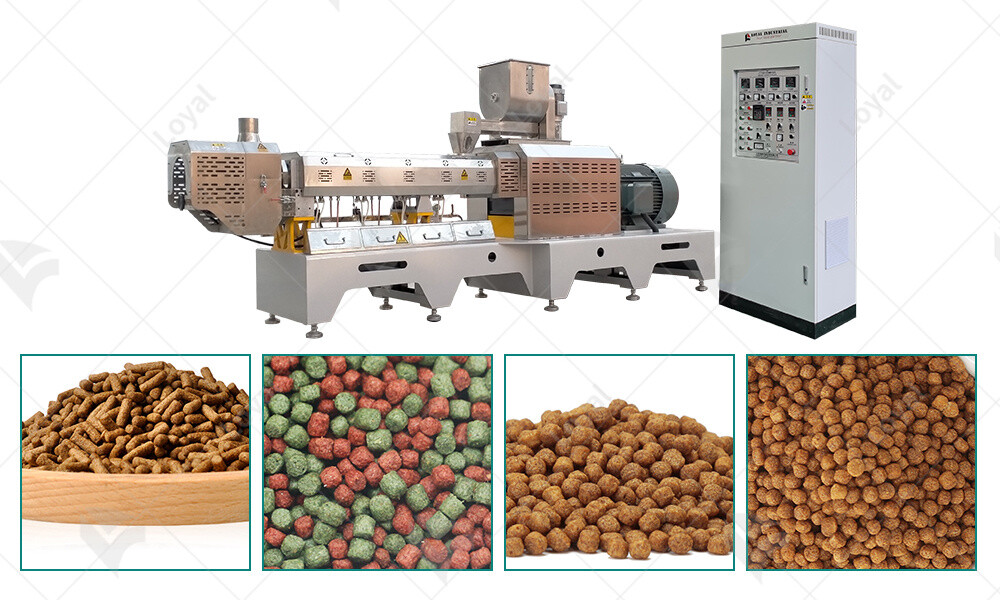
Working Principle of Fish Food Extruder
The working principle of a fish food extruder revolves around the process of extrusion, which involves the transformation of raw ingredients into uniform pellets through the application of heat, pressure, and mechanical shear forces.
Initially, the raw ingredients, including fish meal, grains, vitamins, and minerals, are mixed thoroughly to form a homogeneous mixture. This mixture is then fed into the extruder's chamber, where it is subjected to high temperatures and pressures generated by the rotating screws within the machine. As the material moves along the extruder barrel, it undergoes intense shearing forces and is gradually compressed, heated, and cooked.
The combination of heat, pressure, and mechanical action causes the raw ingredients to undergo physical and chemical transformations, resulting in gelatinization of starches, denaturation of proteins, and expansion of the material. As the processed material reaches the die at the end of the extruder, it is forced through small openings, shaping it into uniform pellets of the desired size and density.
The extruded pellets are then cut to the appropriate length by a knife assembly before being cooled and dried to remove excess moisture. Finally, the pellets are coated with oils, fats, and flavorings to enhance palatability and nutritional value.
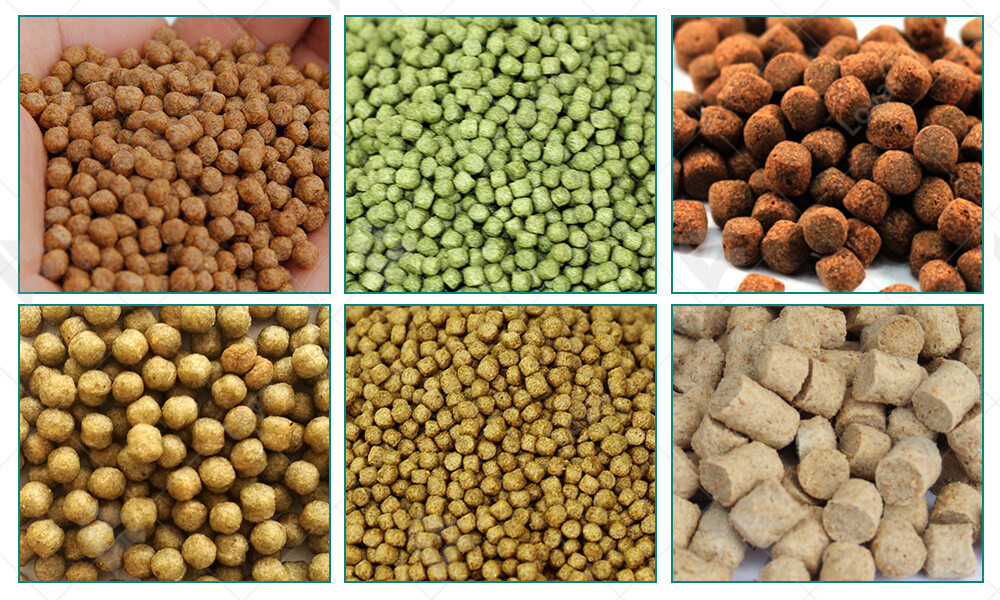
Types of Fish Food Extruder
Fish food extruders are available in various configurations, each designed to meet specific production requirements and operational preferences. Common types of fish food extruders include single-screw extruders, twin-screw extruders, and laboratory-scale extruders.
Single-screw extruders are the most widely used type, featuring a single rotating screw within the extruder barrel. These extruders are suitable for processing a wide range of feed formulations and are characterized by their simplicity, reliability, and cost-effectiveness.
Twin-screw extruders, on the other hand, utilize two intermeshing screws within the extruder barrel, offering enhanced mixing, kneading, and shearing capabilities. These extruders are favored for their ability to process complex formulations and achieve precise control over product characteristics.
Laboratory-scale extruders are compact extrusion systems designed for research and development purposes, allowing manufacturers to test new formulations, process parameters, and product concepts on a small scale before scaling up to full production. Fish food extruders may vary in terms of their capacity, power consumption, and automation level, catering to the diverse needs of pet food manufacturers operating in the aquaculture industry.

Components of Fish Food Extruder
A fish food extruder is a sophisticated piece of machinery designed to efficiently produce high-quality fish food pellets. Understanding its components is crucial for optimizing its performance.
First and foremost, the extrusion barrel serves as the core component of the fish food extruder. It is typically made of stainless steel and houses the entire extrusion process. Within the barrel, there are several key elements. The screw shaft, also known as the extrusion screw, is responsible for pushing the raw ingredients through the barrel. Its design, including the pitch and flight depth, greatly influences the extrusion process. Alongside the screw shaft is the die plate, which shapes the extruded material into the desired pellet form. Die plates come in various configurations depending on the size and shape of the pellets required.
Additionally, the fish food extruder is equipped with a feeder mechanism, which accurately meters the raw ingredients into the extrusion barrel. The feeder ensures a consistent flow of ingredients, contributing to uniform pellet quality. To facilitate the extrusion process, the extruder also includes a heating system. This system maintains the optimal temperature within the barrel, allowing for the precise cooking and expansion of the fish food mixture.
Modern fish food extruders often incorporate control systems to monitor and adjust various parameters in real-time. These systems may include temperature sensors, pressure gauges, and motor speed controllers. By fine-tuning these parameters, operators can optimize the extrusion process for maximum efficiency and pellet quality.
The components of a fish food extruder work in harmony to transform raw ingredients into nutritious pellets. From the extrusion barrel and screw shaft to the feeder and control systems, each element plays a vital role in the production process.
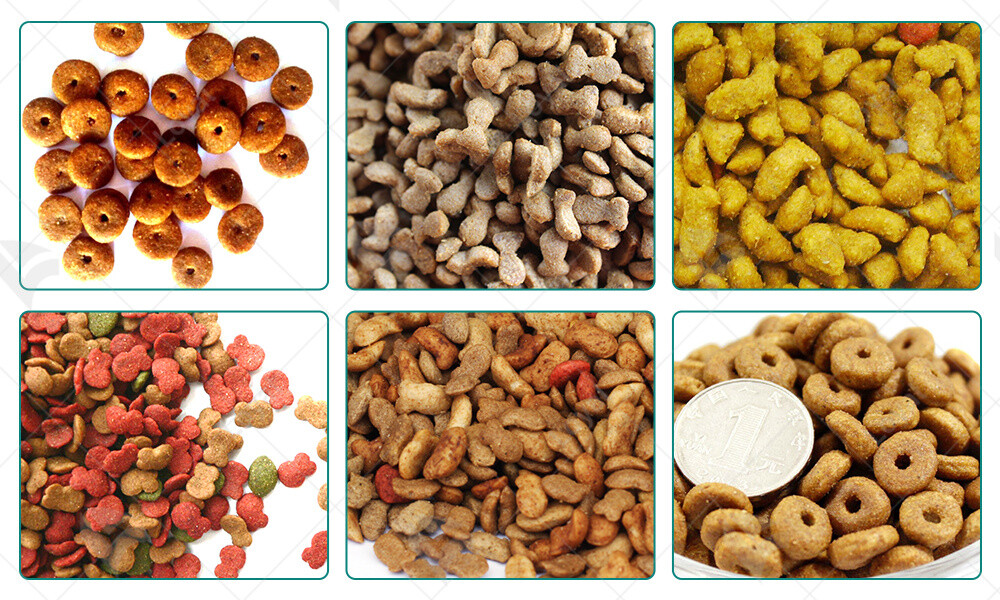
Factors Affecting Fish Food Extrusion
Several factors influence the extrusion process of fish food, ultimately affecting the quality and characteristics of the produced pellets.
One significant factor is the composition of the raw ingredients. The formulation of the fish food mixture, including the types and proportions of ingredients such as fish meal, grains, and vitamins, directly impacts extrusion performance. Ingredients with different moisture levels, protein content, and particle size require adjustments in extrusion parameters to achieve desired pellet properties.
Another critical factor is the moisture content of the raw material. Optimal moisture levels are essential for proper gelatinization of starches and proteins during extrusion. Too little moisture can result in dry, brittle pellets, while excessive moisture may cause sticking or clogging within the extruder barrel. Therefore, precise control of moisture content is vital to ensure consistent pellet quality.
The temperature profile within the extruder barrel also significantly influences the extrusion process. Different temperature zones along the barrel allow for specific cooking and expansion stages. High temperatures promote starch gelatinization and protein denaturation, leading to better pellet texture and digestibility. However, excessive heat can degrade nutritional components and cause discoloration or off-flavors in the final product.
Screw configuration plays a crucial role in determining the residence time and shear forces exerted on the fish food mixture. The design of the screw, including its pitch, compression ratio, and flight depth, affects the intensity of mixing and cooking during extrusion. Proper screw design is essential for achieving uniform pellet density and shape.
Other factors such as extrusion pressure, die configuration, and drying conditions also impact fish food extrusion. Understanding and optimizing these factors allow manufacturers to produce high-quality fish food pellets that meet nutritional requirements and consumer preferences.
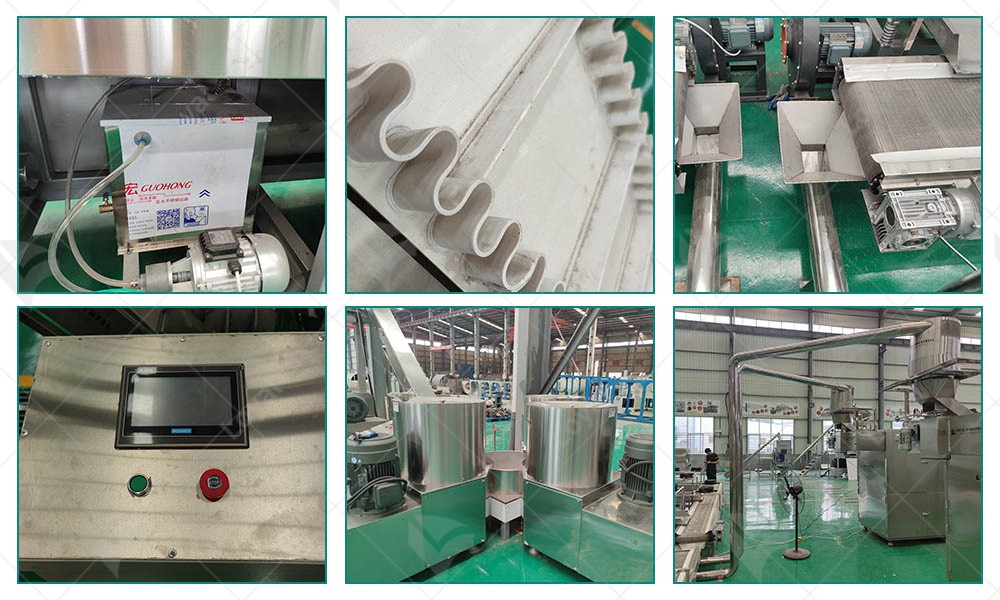
Advantages of Using Fish Food Extruder
Fish food extruders offer several advantages over traditional methods of fish feed production. These advantages contribute to improved efficiency, product quality, and cost-effectiveness in the pet food industry.
Firstly, fish food extruders allow for precise control over the feed formulation and processing parameters. This precision ensures consistency in the nutritional content and physical characteristics of the fish feed, leading to better growth and health outcomes for the fish.
Fish food extruders facilitate the production of floating fish feed, which is essential for certain species of fish that prefer to feed at the water surface. The buoyancy of extruded fish feed helps prevent wastage and contamination by keeping the feed on the water surface where it can be easily consumed by the fish.
The extrusion process used in fish food extruders enhances the digestibility of the feed ingredients. The high temperature and pressure conditions during extrusion effectively gelatinize starches and denature proteins, making them more accessible to the digestive enzymes of the fish. This improved digestibility results in higher feed conversion rates and reduced environmental pollution due to lower nutrient excretion.
Fish food extruders enable the incorporation of functional ingredients and additives into the feed matrix. This flexibility allows pet food manufacturers to enhance the nutritional value of the fish feed by including vitamins, minerals, probiotics, and other bioactive compounds. These added ingredients can improve fish health, disease resistance, and overall performance.
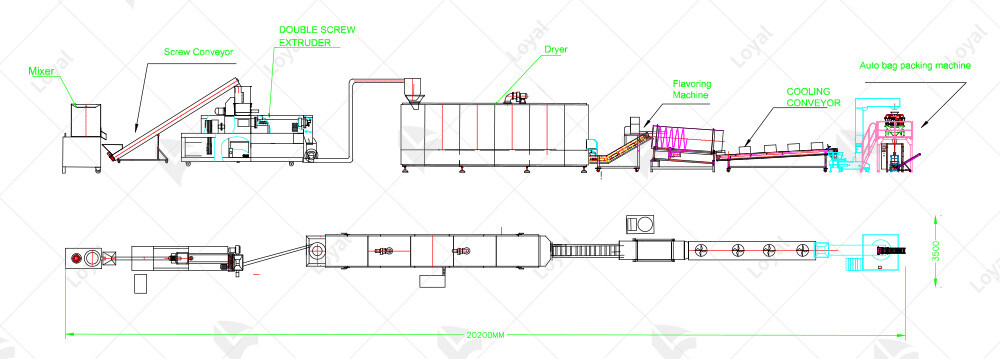
Applications of Fish Food Extruder in the Pet Food Industry
Fish food extruders play a crucial role in the pet food industry, particularly in the production of high-quality fish feed for ornamental and aquaculture fish species. The versatility and efficiency of fish food extrusion technology make it well-suited for meeting the nutritional requirements and feeding habits of various fish species.
One of the primary applications of fish food extruders is the production of complete and balanced floating fish feeds for ornamental fish kept in aquariums and ponds. These feeds are formulated to provide essential nutrients such as proteins, fats, carbohydrates, vitamins, and minerals in appropriate proportions to support optimal growth, coloration, and overall health of the fish.
Additionally, fish food extruders are widely used in the aquaculture industry for the production of commercial fish feeds for species such as tilapia, salmon, trout, catfish, and carp. These feeds are formulated to meet the specific dietary needs of each fish species at different life stages, from fry to adults, and are essential for achieving optimal growth rates, feed conversion ratios, and fillet quality.
Fish food extruders are utilized in the manufacturing of specialized fish feeds for niche markets, such as ornamental koi and goldfish, as well as exotic and tropical fish species. These feeds may contain unique ingredients or additives tailored to meet the specific nutritional requirements or dietary preferences of these fish, thereby catering to the diverse needs of pet fish enthusiasts.
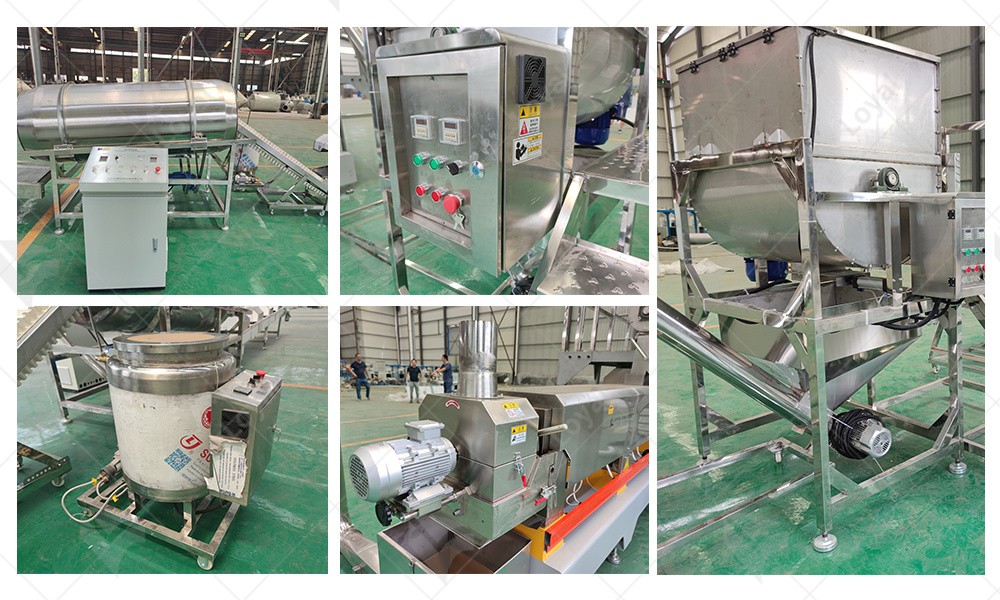
Safety Precautions When Operating Fish Food Extruder
Firstly, before operating the fish food extruder, ensure that all personnel involved have received proper training on its use and safety procedures. This training should cover operation, maintenance, and emergency protocols.
Secondly, always wear appropriate personal protective equipment (PPE) when operating the fish food extruder. This includes safety goggles, gloves, and protective clothing to prevent injuries from hot surfaces, moving parts, or flying debris.
Thirdly, regularly inspect the fish food extruder for any signs of wear, damage, or malfunction. This includes checking for loose bolts, worn-out components, or leaks that could pose safety hazards during operation.
Fourthly, ensure that the area around the fish food extruder is clear of clutter and obstructions. This will prevent tripping hazards and allow for easy access in case of emergency shutdowns or maintenance.
Lastly, follow all manufacturer's instructions and guidelines for safe operation of the fish food extruder. This includes proper installation, operation within specified parameters, and regular maintenance schedules to ensure optimal performance and safety.

Future Trends in Fish Food Extruder Technology
One significant trend is the integration of IoT (Internet of Things) technology into Fish Food Extruders. This allows for real-time monitoring and control of the extrusion process, enhancing efficiency and product quality. IoT-enabled extruders can adjust parameters such as temperature, pressure, and moisture content dynamically, optimizing the production process and minimizing waste.
Another emerging trend is the development of Fish Food Extruders with enhanced customization capabilities. Manufacturers are increasingly offering extruders that can produce a wide range of fish food formulations, catering to the diverse dietary needs of different fish species. This customization extends to pellet size, shape, and texture, allowing pet food companies to meet the specific preferences of their target market.
Furthermore, sustainability is becoming a key focus in Fish Food Extruder technology. Manufacturers are exploring eco-friendly materials and energy-efficient processes to minimize the environmental impact of pet food production. This includes the adoption of renewable energy sources, such as solar or wind power, to power extrusion equipment, as well as the use of biodegradable packaging materials.
In conclusion, the future of Fish Food Extruder technology is characterized by advancements in IoT integration, customization capabilities, sustainability, material science, and AI-driven optimization. These trends are driving innovation in the pet food industry, enabling manufacturers to produce high-quality, sustainable fish food products to meet the evolving needs of pet owners.
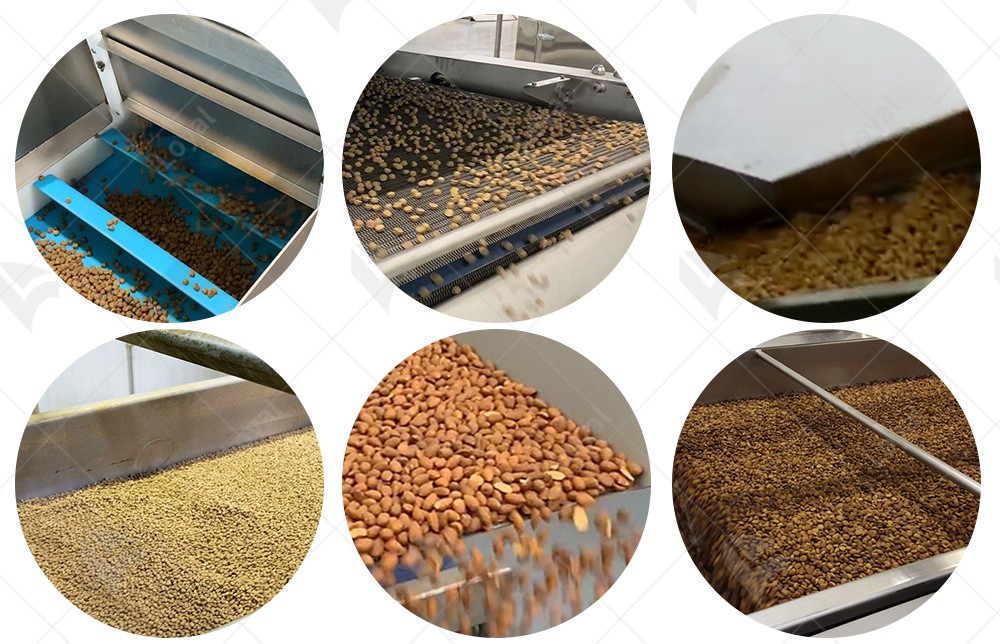
FAQs: Frequently Asked Questions about Fish Food Extruder
1. What is a Fish Food Extruder?
A Fish Food Extruder is a specialized industrial machine used in the production of fish food pellets. It processes raw ingredients, such as fish meal, grains, and vitamins, through a high-pressure extrusion process to form uniform and nutritious pellets suitable for feeding various species of fish.
2. How does a Fish Food Extruder work?
Fish Food Extruders operate by forcing a mixture of raw ingredients through a barrel equipped with a screw conveyor. The screw applies heat and pressure to the mixture, causing it to undergo cooking, mixing, and shaping processes. As the material exits the extruder die, it expands and solidifies into the desired pellet shape.
3. What types of Fish Food Extruders are available?
Fish Food Extruders come in various configurations, including single-screw and twin-screw designs. Single-screw extruders are suitable for processing simple formulations and are cost-effective for small-scale operations. Twin-screw extruders offer higher throughput and greater versatility, allowing for the production of a wider range of fish food products.
4. What are the main components of a Fish Food Extruder?
Key components of a Fish Food Extruder include the barrel, screw(s), die, feeder, conditioner, and cutter. The barrel provides the enclosure for the extrusion process, while the screw(s) convey, mix, and compress the raw material. The die shapes the extrudate, and the feeder and conditioner regulate the flow and moisture content of the material. The cutter slices the extrudate into pellets of the desired length.

References
1.Wenger Manufacturing: https://www.wenger.com
2.Clextral: https://www.clextral.com
3.Bühler Group: https://www.buhlergroup.com
4. Baker Perkins: https://www.bakerperkins.com
5.Andritz Group: https://www.andritz.com